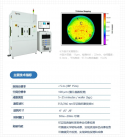Join hands with Huawei Kunpeng to help build a domestic EDA platform
Faced with the uncertainty of the global supply chain, domestic processors have risen and become an important support for the development of China's digital industry. Huawei also launched its self-developed Kunpeng processor in 2019. Based on the ARM architecture, it aims to build a computing platform with independent intellectual property rights and create an important computing infrastructure for all its digital applications.
To this end, Huawei has adopted an open ecosystem strategy. By opening the instruction set architecture of the Kunpeng processor, it invites partners to jointly develop and optimize software to adapt to the Kunpeng platform and promote the coordinated development of the entire industry chain.
In July 2021, Xinhuazhang's related products passed the Huawei Kunpeng computing field OpenLab compatibility test and became a Huawei certified ISV partner. In 2022, Xinhuazhang GalaxSim won the first prize in the Huawei Kunpeng Innovation Competition.
At present, Xinhuazhang's core EDA software products have completed the porting of the Kunpeng platform , and have completed a lot of fruitful development work in compilation environment adaptation, C++/ASM compilation adaptation, cmake and other compilation script adaptation, and third-party library adaptation.

Compatibility is only the first step in the construction of the entire ecosystem. Xinhuazhang also optimizes code and compilation based on the characteristics of Kunpeng processors, and continues to support EDA computing to achieve performance excellence on Kunpeng server clusters. The development of parallel computing methods such as multi-threading and multi-process is one of the important directions.
Based on domestic architectures such as the Kunpeng processor, Xinhuazhang's logic simulator GalaxSim and formal verification tool GalaxFV can effectively utilize Kunpeng's high-performance cluster to improve compilation and computing, accelerate coverage convergence at different levels of performance and parallelism, and significantly improve the efficiency of system-level chip simulation and verification.
Among them, GalaxSim has achieved a 2-3 times improvement in simulation performance on multiple customer test cases , significantly reducing the time for simulation regression testing.
The combination of domestic EDA platforms and Huawei Kunpeng processors is not only an important part of Huawei Kunpeng's ecological construction, but will also provide a safe, reliable and efficient design environment for the domestic semiconductor industry. The cooperation between the two parties will accelerate the development of domestic EDA tools, enhance the independent innovation capabilities of the domestic semiconductor industry, and provide a solid foundation for building a safe and controllable information technology system.


